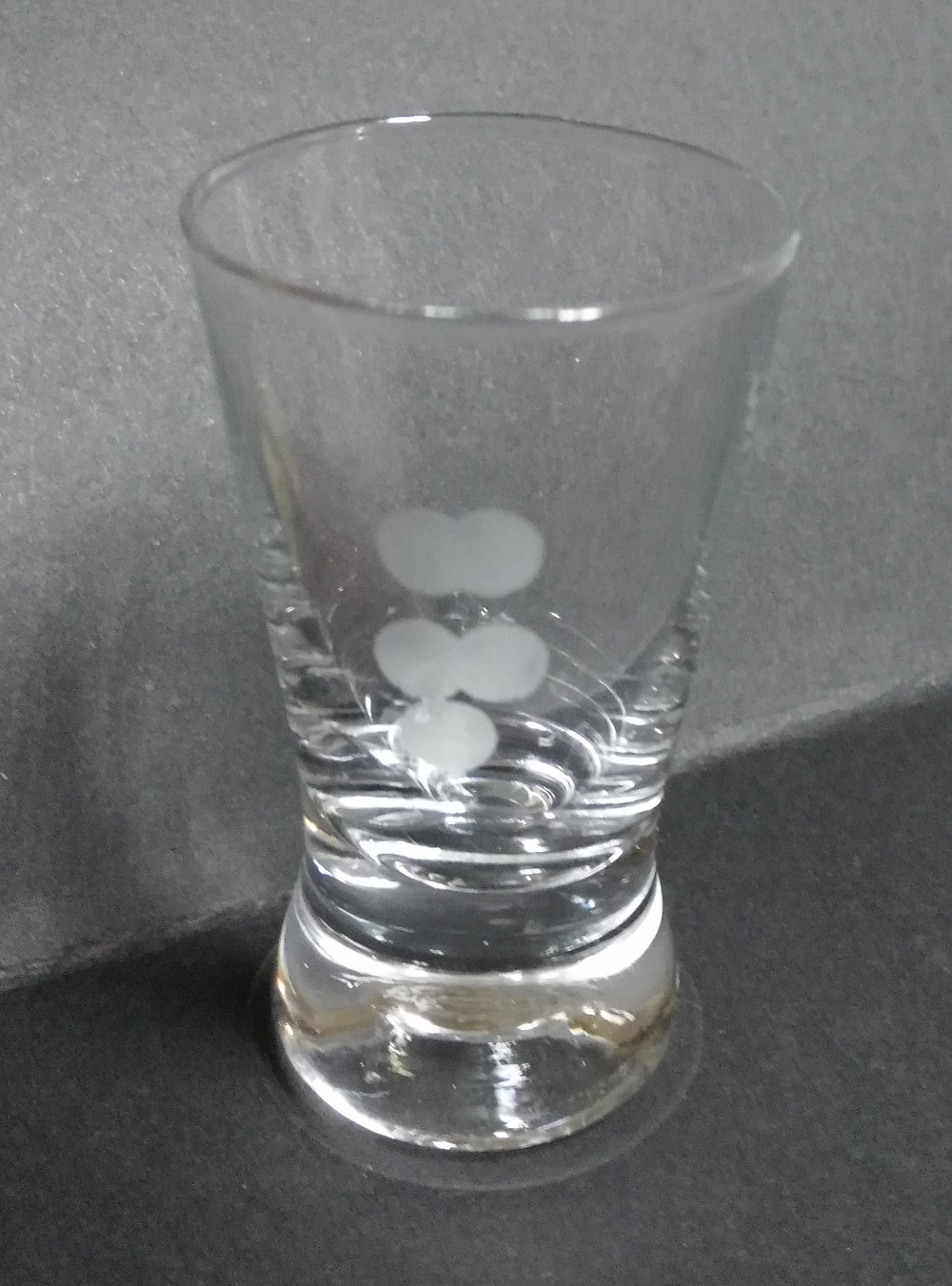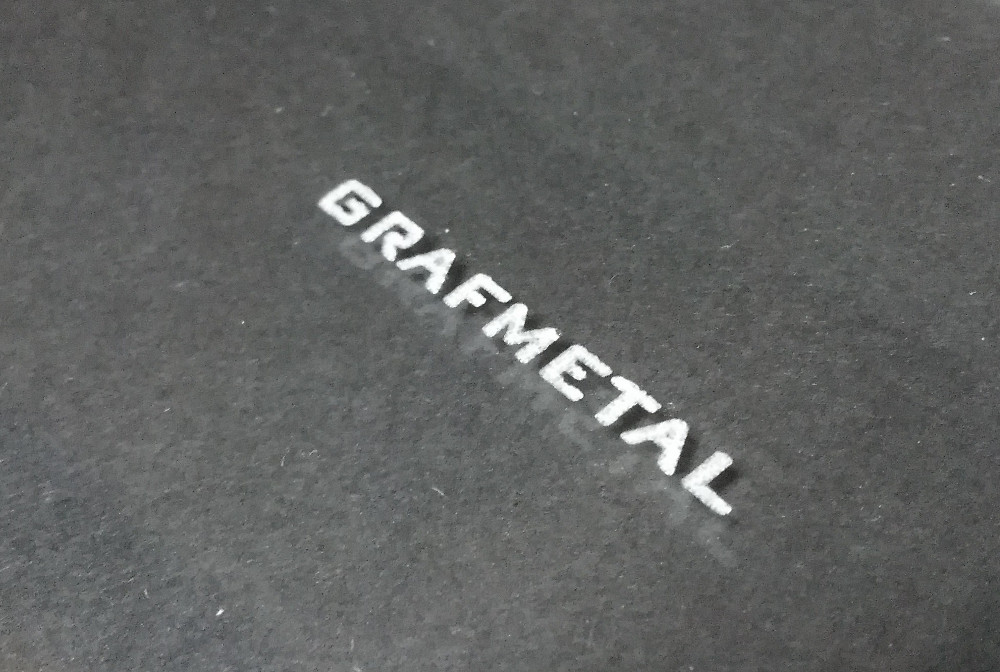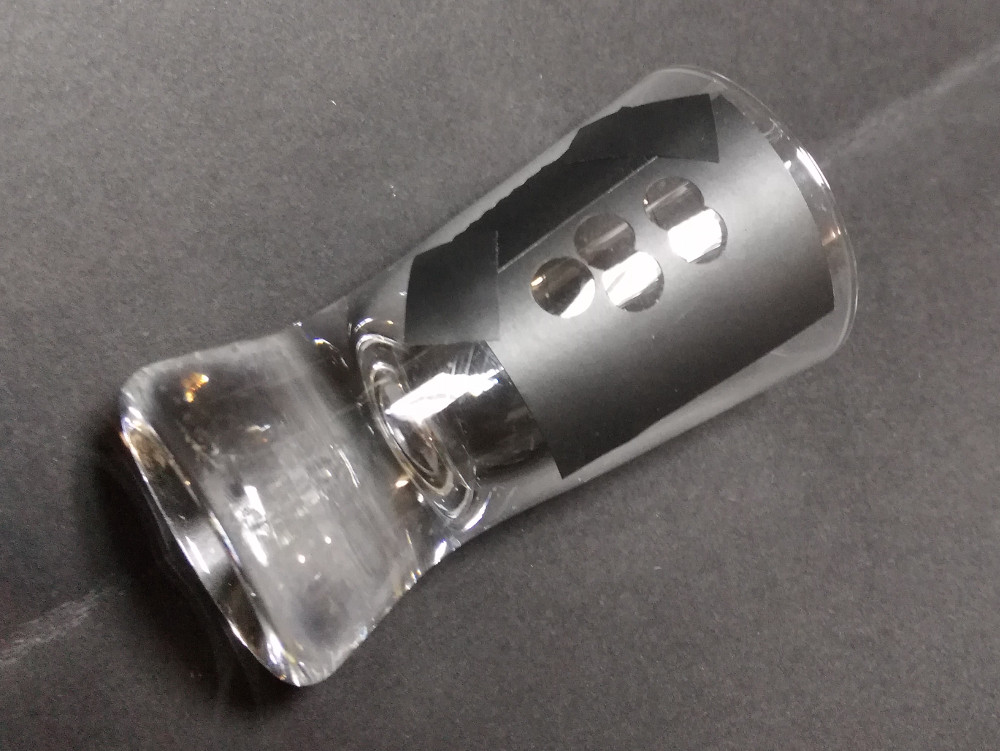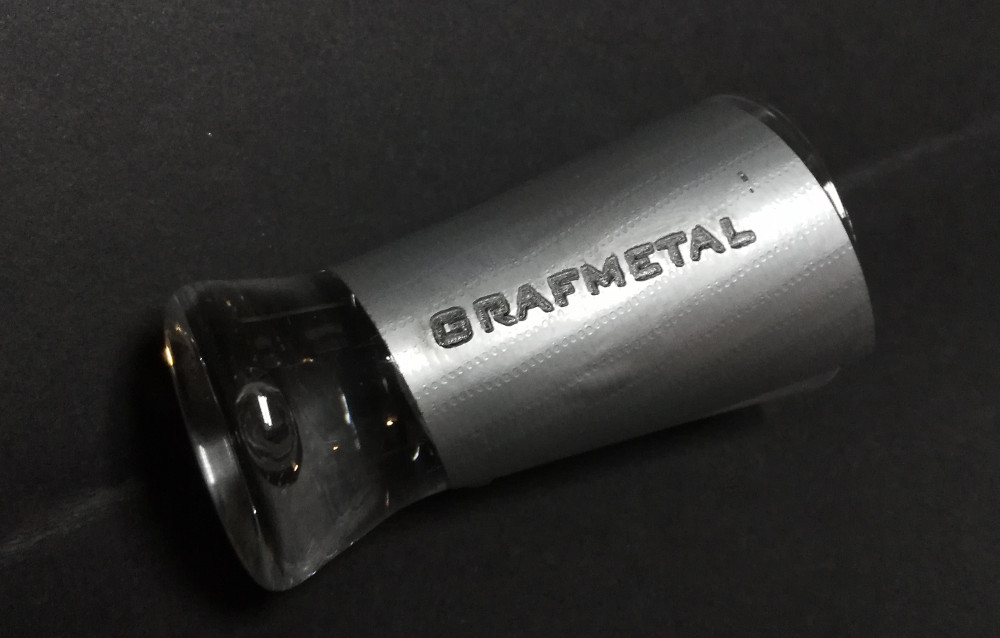

GRAFMETAL glass etching paste is used for etching i.e. local removal and roughening of the surface of glass and glazed ceramics.
GRAFMETAL glass etching paste allows us to for local roughening of the surface of glass, so one can apply a desired pattern in a permanent way.

Etching paste is applied the following way:
Apply a mask to the glass object: it can be cut vinyl film, or you can apply adhesive tape (such as fabric-reinforced tape, so-called duct tape) to the surface of the glass, and then burn a design in it with a laser
Use a plastic or wooden spatula to apply the paste to the parts to be etched
After up to one hour, the paste should be rinsed with water and the mask then can be removed. For some glass types it may be needed to extend the etching time even up to 24 hours.
Warning: the paste is a dangerous product not intended for children, it is recommended to work with gloves and provide eye protection.
Using the vinyl film as a mask, you will get a highly visible and fairly smooth etching similar to the ornaments often found on decorative glasses and tankards.

When using a CO2 laser to engrave a pattern in the adhesive tape, we get a deep and highly contrasting pattern, much clearer and more aesthetic than when processed with such a laser without etching.

Preparing the surface is easy and it is based on cutting the pattern in a mask e.g. by a plotter or by applying an appropriate adhesive tape and then engraving it with a laser like in the pictures shown below.


The paste is thick and can be applied even to vertical surfaces.

The paste can also be used to roughen up tiles and similar surfaces to prevent slippage.

Paste etches ordinary glasses, such as soda or soda-lime glasses, the fastest. The paste may etch other types of glasses more slowly, such as borosilicate glasses, used to make laboratory glassware or heat-resistant dishes, among others. It is then necessary to use any of the following methods: significantly prolonging the etching time, applying the paste to warm glass, repeatedly applying the paste to the same spot or placing the object with the paste in a warm place. The effect of etching depends on the type and composition of the glass, so the etching procedure should be refined experimentally.


USER MANUAL
MATERIAL SAFETY DATA SHEET
INSTRUKCJA
KARTA CHARAKTERYSTYKI
NAVOD